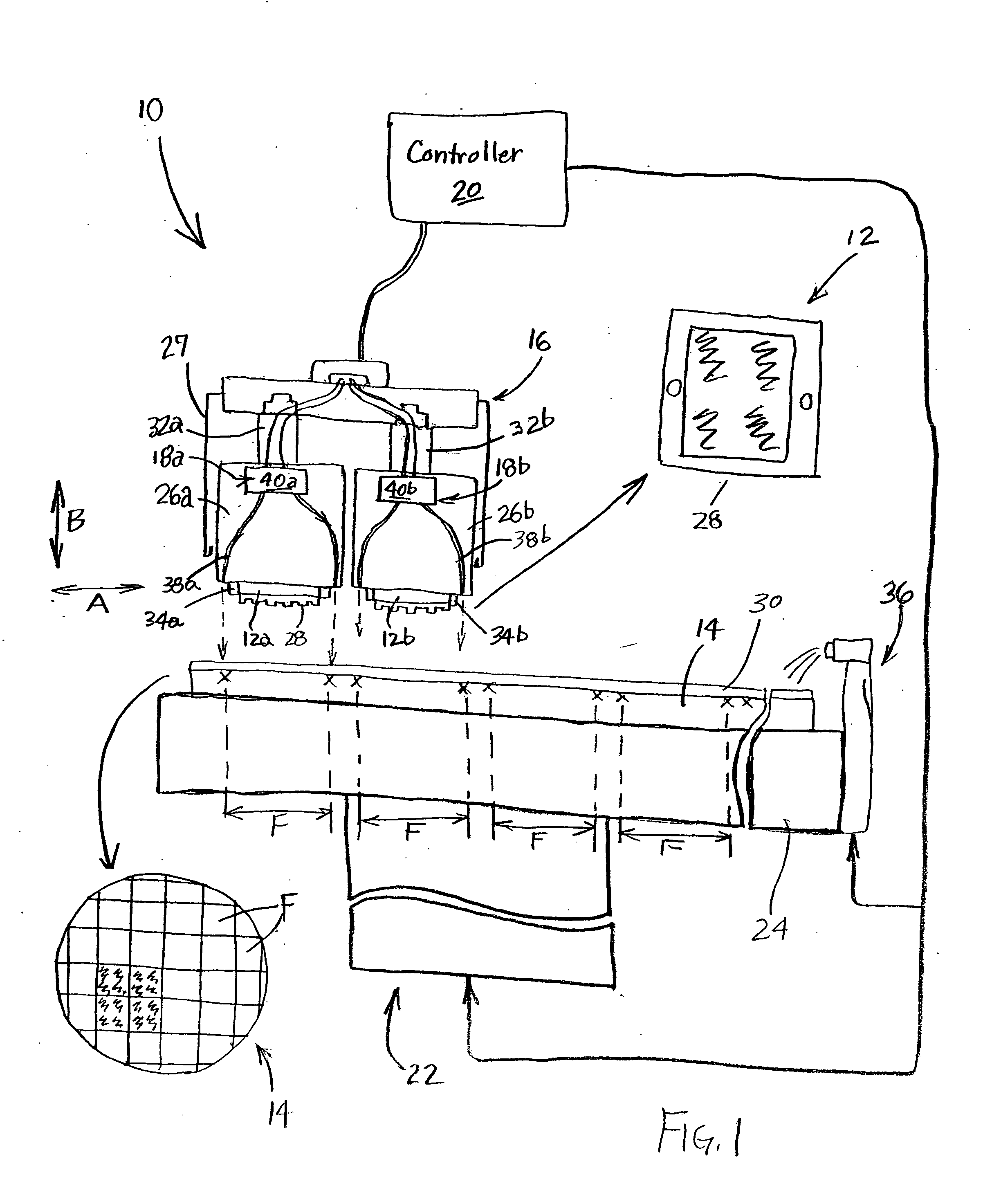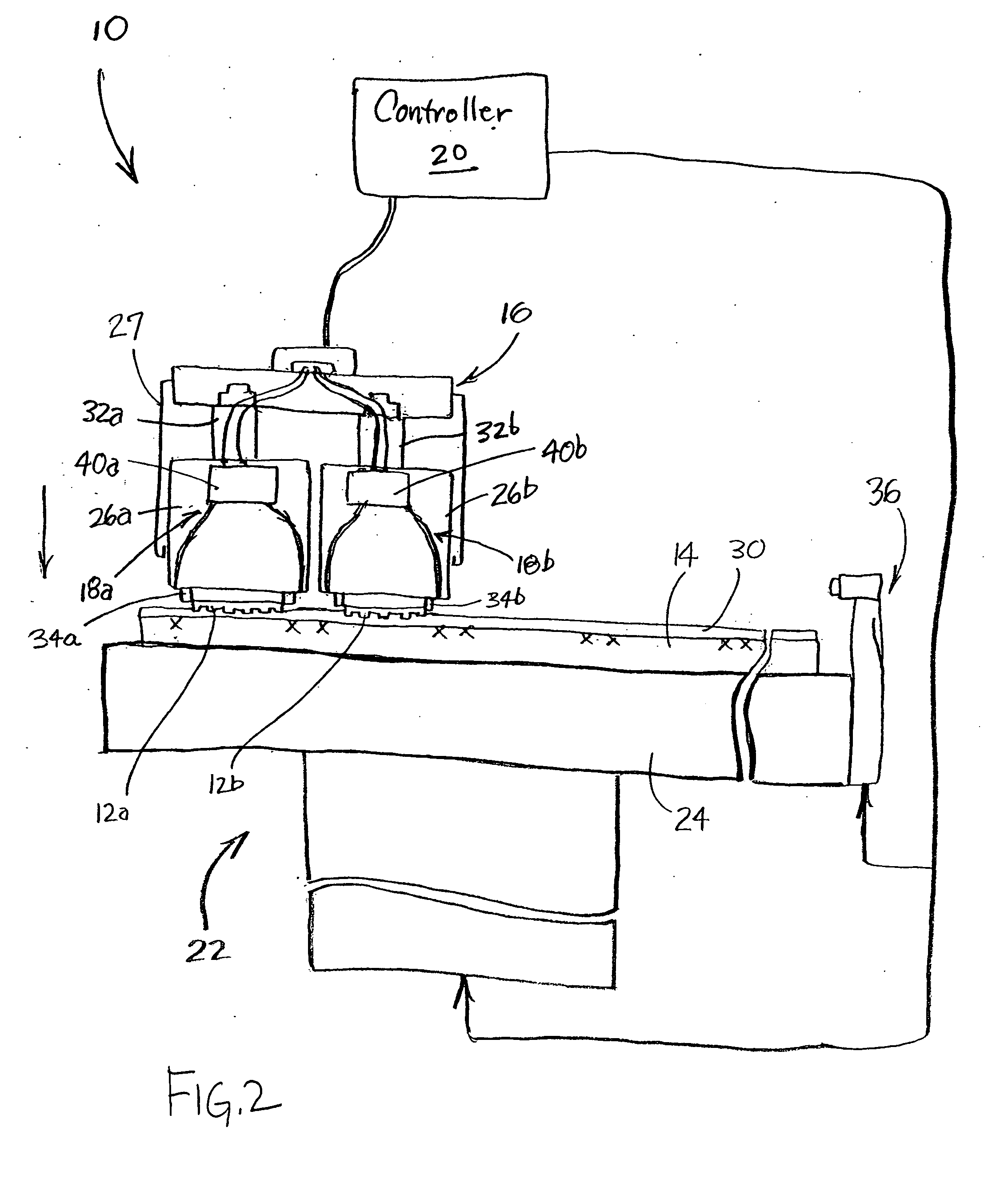Method for rapid printing of near-field and imprint lithographic features
a technology of lithographic features and near-field, which is applied in the field of material processing systems, can solve the problems of limiting the ability to produce extremely small structural features for integrated circuits, many problems that must be overcome, and it is not possible to print an entire wafer at once, so as to achieve high throughput and improve the effect of throughput and resolution
- Summary
- Abstract
- Description
- Claims
- Application Information
AI Technical Summary
Benefits of technology
Problems solved by technology
Method used
Image
Examples
Embodiment Construction
[0029] The following description with reference to the figures provides illustrative examples of lithography systems for processing multiple locations (fields) on a substrate in parallel. Such description is only for illustrative purposes and it is to be understood that the invention can have application to other apparatus, processes, and technologies. Thus, the present invention is not limited to the described illustrative examples.
[0030] For the convenience of drawings and explanation, the lithographic head unit is shown as having four heads. Other configurations such as a unit having two heads, three heads, or more than four heads, are within the scope of the invention.
[0031] In the context of the current application, the term “semiconductor substrate” or “semiconductive substrate” or “semiconductive wafer fragment” or “wafer fragment” or “wafer” will be understood to mean any construction comprising semiconductor material, including but not limited to bulk semiconductive mater...
PUM
| Property | Measurement | Unit |
|---|---|---|
| Light | aaaaa | aaaaa |
| Surface plasmon | aaaaa | aaaaa |
Abstract
Description
Claims
Application Information
 Login to View More
Login to View More - R&D
- Intellectual Property
- Life Sciences
- Materials
- Tech Scout
- Unparalleled Data Quality
- Higher Quality Content
- 60% Fewer Hallucinations
Browse by: Latest US Patents, China's latest patents, Technical Efficacy Thesaurus, Application Domain, Technology Topic, Popular Technical Reports.
© 2025 PatSnap. All rights reserved.Legal|Privacy policy|Modern Slavery Act Transparency Statement|Sitemap|About US| Contact US: help@patsnap.com



